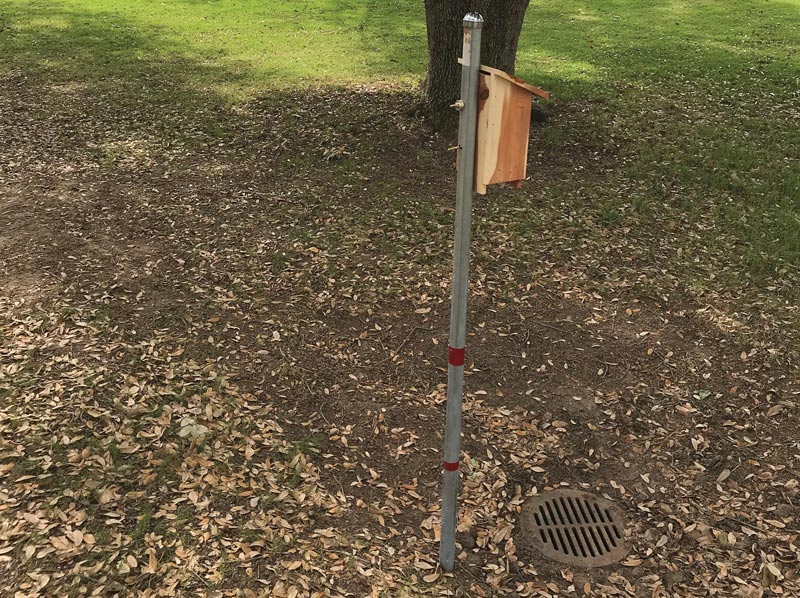
Let a birdhouse be your beacon to swiftly locate an obscured drain. Photo courtesy of Anthony Williams
Have you ever had to wade into what appeared to be a small pond on the golf course after a sudden thunderstorm to find and clear a clogged drain? It turns out that many drains that are in collection areas that tend to catch debris and flood are actually pretty good sites for nest boxes, especially bluebird nest boxes.
Whether you’re seeking certification from Audubon International, Golf Environment Organization or another entity, or just working to up your facility’s environmental stewardship efforts, this is an excellent enhancement to your wildlife habitat management program as well as a huge timesaver after heavy rains.
Construction may vary, but at a minimum, a galvanized pole 1½ inches in diameter and 7 feet tall with a standard nest box made of cedar or pine works great. The cost per site ranges from $11 to $35, so it’s affordable. The National Audubon Society offers a great design for building your own nest boxes.
To install, drive the pole into the ground on one corner of the drain basin (avoiding the drainpipe) so that the nest box is roughly 5 feet above ground. When mounted, the box’s entrance hole should face the drain but away from prevailing winds. Attach the nest box to the pole by drilling two quarter-inch holes through the back of the box and pole, and attach with threaded bolts and washers. If snakes are an issue, install a circular piece of sheet metal angled downward about one-third of the way down the pole. You can also place watermarks on the pole with bright paint or tape.
Watch: Get a peek inside the bluebird nest boxes at The Oregon Golf Club in West Linn., Ore.:
The next time it rains and your drain clogs, simply wade out to the pole (the watermarks will tell you how deep the water is). The drain lies just under the hole of the nest box. Rake away the debris and watch the water flow. This trick is simple and effective and creates habitat where you least expect it.
Anthony L. Williams, CGCS, is director of golf course maintenance at TPC Four Seasons Resort and Club Dallas at Las Colinas. A 24-year association member, Williams has won GCSAA’s President’s Award for Environmental Stewardship and is a four-time winner in the Environmental Leaders in Golf Awards.